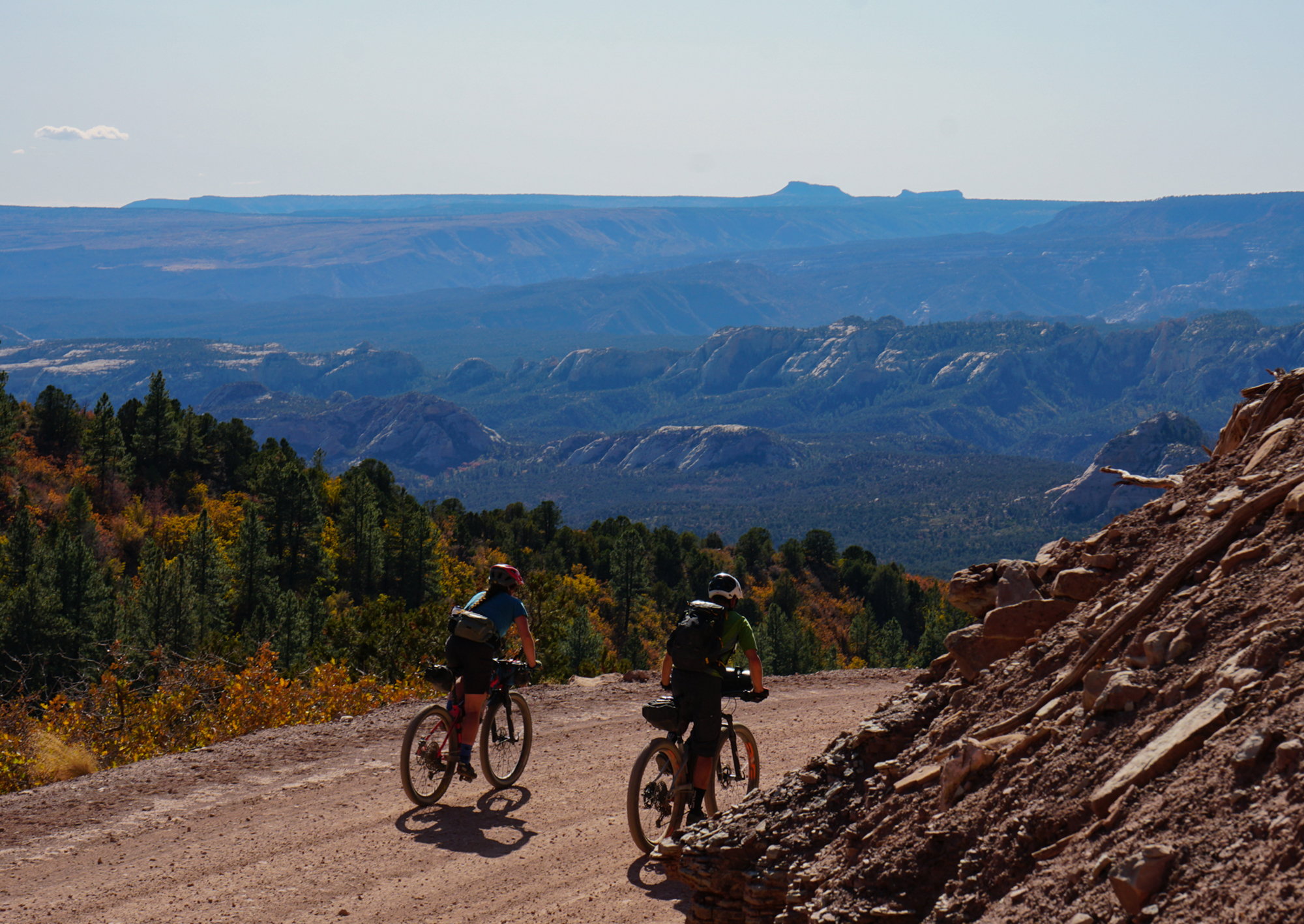Bikepacking Roots is releasing the long-awaited Bears Ears Loops bikepacking route network – 700 miles of riding options through the high deserts and subalpine wilds of central and southeastern Utah. Their goal with these routes are to empower riders to confidently and safely immerse themselves in the remarkable but intimidating landscape, develop an informed sense of place, and experience some of all that is at risk to be lost if the Bears Ears region is not protected.
The 372-mile Bears Ears Loop, the eastern of two loop options, meanders through more than 100 miles within the original boundaries of Bears Ears National Monument. By helping bikepackers experience this and the surrounding landscapes and understanding more about the unique cultural history, geology, and ecology through the accompanying 100-page Bears Ears Loops Landscape and Route Guide, Bikepacking Roots is actively creating new advocates for Bears Ears. The 437-mile Swell Loop to the west connects with the already-popular Wild West Route, the Canada-to-Mexico epic also created by Bikepacking Roots.


The riding experience of this network has been intentionally designed as relatively non-technical, very manageable on a traditional mountain bike (fat bikes are not necessary, and gravel bikes are not recommended), and to be accessible for any mountain biker with some prior bikepacking experience. Most of the riding is on dirt roads and 4×4 tracks, and water resources along the way have been inventoried and scouted in different seasons to assess reliability. Bikepacking Routes also chose to not route the loops through the more seldom-visited areas of the Monument to avoid impacting their nature.

“The remoteness of this region, the scale and grandeur of the landscape, and the minimal development of any sort make this place the most powerful of anywhere I’ve ridden,” says Kurt Refsnider, Bikepacking Roots Executive Director. “But the remoteness and perceived harshness of the area keep most bikepackers away. So we’ve created these routes and extensive planning resources to allow more riders to safely adventure through this region, to have immersive experiences here, to learn more about the landscape and its sacredness to Indigenous groups. That understanding and connection is what builds new conservation advocates.”

The designation of Bears Ears National Monument in 2016 marked the first time in U.S. history that a National Monument was created in response to the voices of the Indigenous groups who call the landscape home – the Hopi Tribe, Navajo Nation, Ute Mountain Ute Tribe, Pueblo of Zuni, and Ute Indian Tribe. Just 11 months later, the Trump administration reduced the Monument’s size by ~85%. And in a direct affront to the request of the Intertribal Coalition, the southern unit of the reduced Monument was named the Shásh Jaa’ Unit (using the Diné name for Bears Ears). The Coalition had insisted upon the use of the English “Bears Ears” name for the Monument rather than in any one tribe’s language in solidarity and unity. The legality of the Monument reduction is currently being litigated in court.

“We oftentimes hear phrases such as ‘land conservation’ and ‘protecting public lands’ in the outdoor industry which is heavily driven by preserving the ability to recreate in these places,” explains Diné (Navajo) conservation advocate and mountain biker Renee Hutchens. “We too advocate, but what drives our fight to protect our land is our belief that the land is us – our identity, culture, and way of life is held within Mother Earth. It is the same mindset you’d have if you were fighting for your own life or that of your loved ones.”

More information about these loops, all GPS data, and the full Bears Ears Loops Landscape and Route are available on Bikepacking Roots’ website.
However, during the ongoing Covid-19 pandemic, the Bears Ears Inter-Tribal Coalition is requesting that visitors refrain from traveling to the Bears Ears region given the severity of the health crisis in some local communities, particularly Indigenous communities. So now is the time for planning trips, not actually taking trips to this area – that’s how we collectively can best show respect and solidarity at this time.

Bikepacking Roots is the only 501(c)(3) non-profit organization dedicated to supporting and advancing bikepacking, growing a diverse bikepacking community, advocating for the conservation of the landscapes and public lands through which we ride, and creating professional routes. We value human-powered adventure and an inclusive, engaged, and informed membership that makes a positive impact as we explore by bike. Bikepacking Roots has been engaged in advocacy for Bears Ears National Monument since 2017.




































































